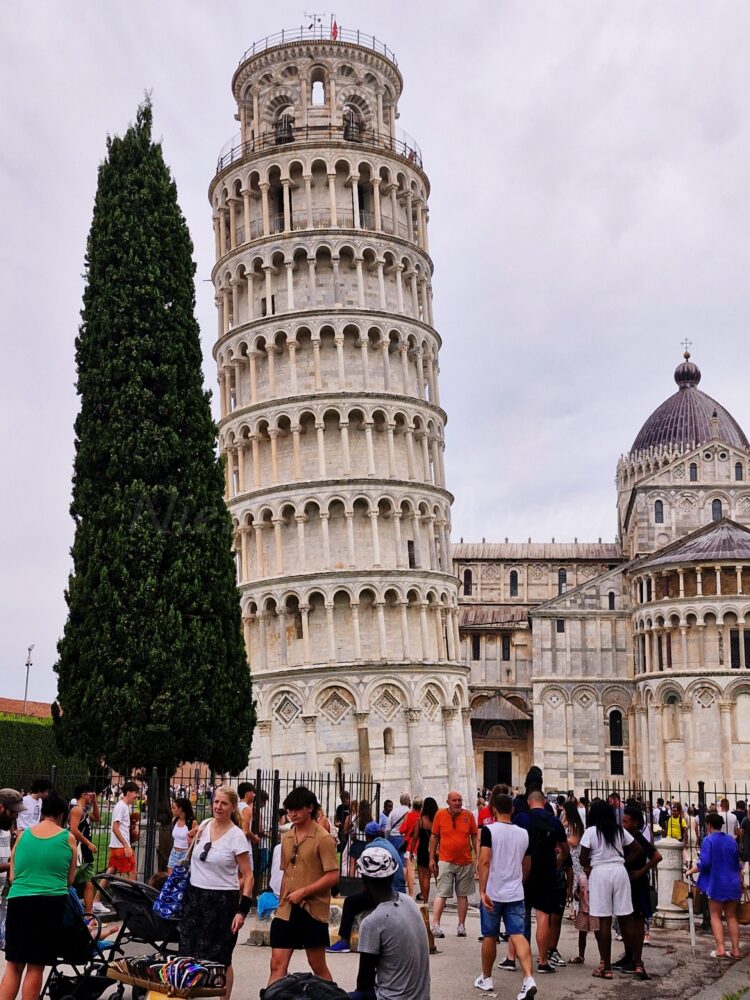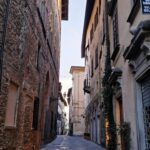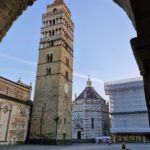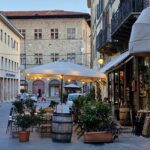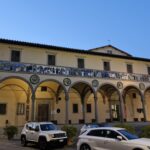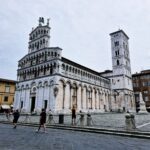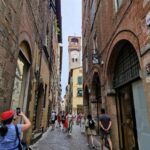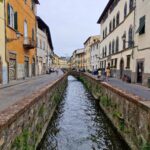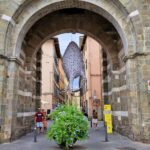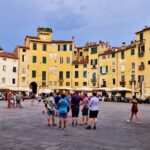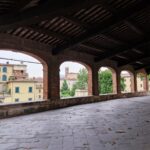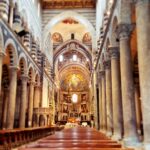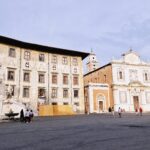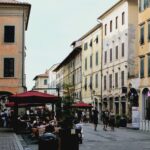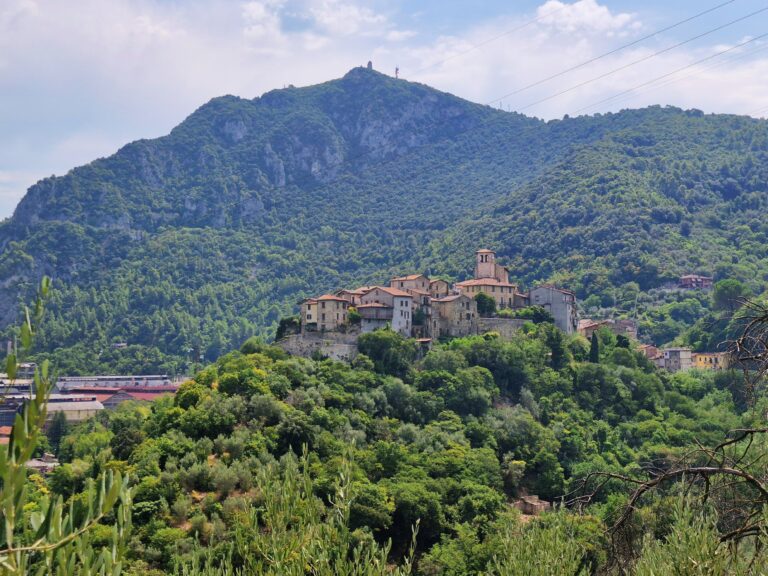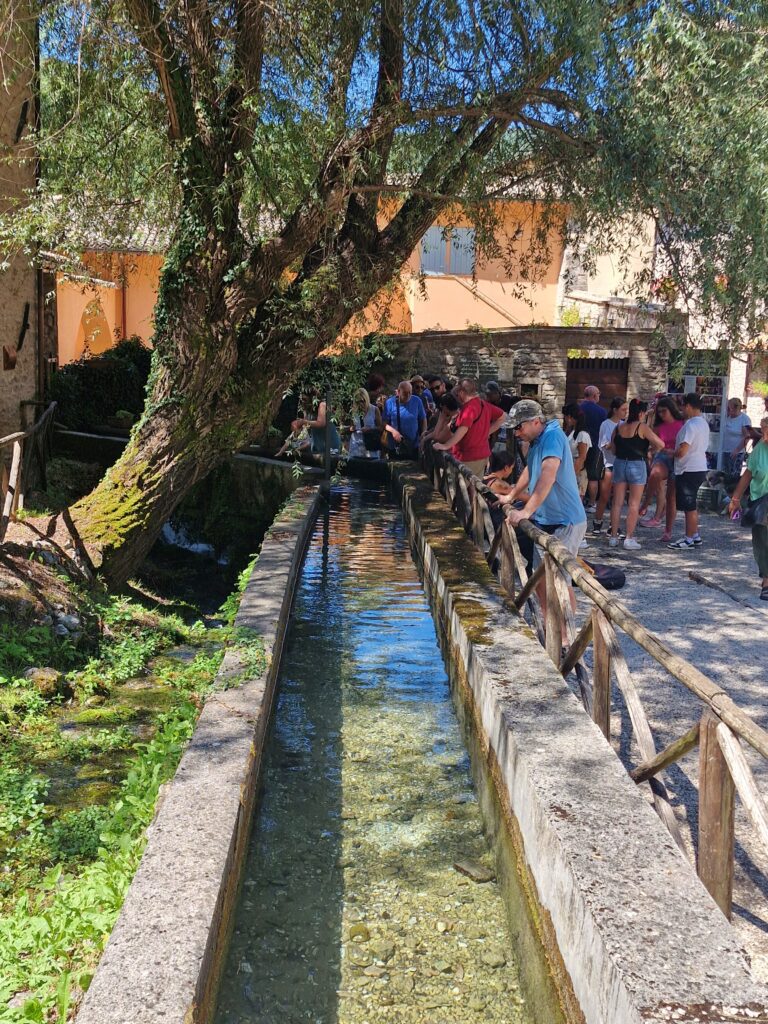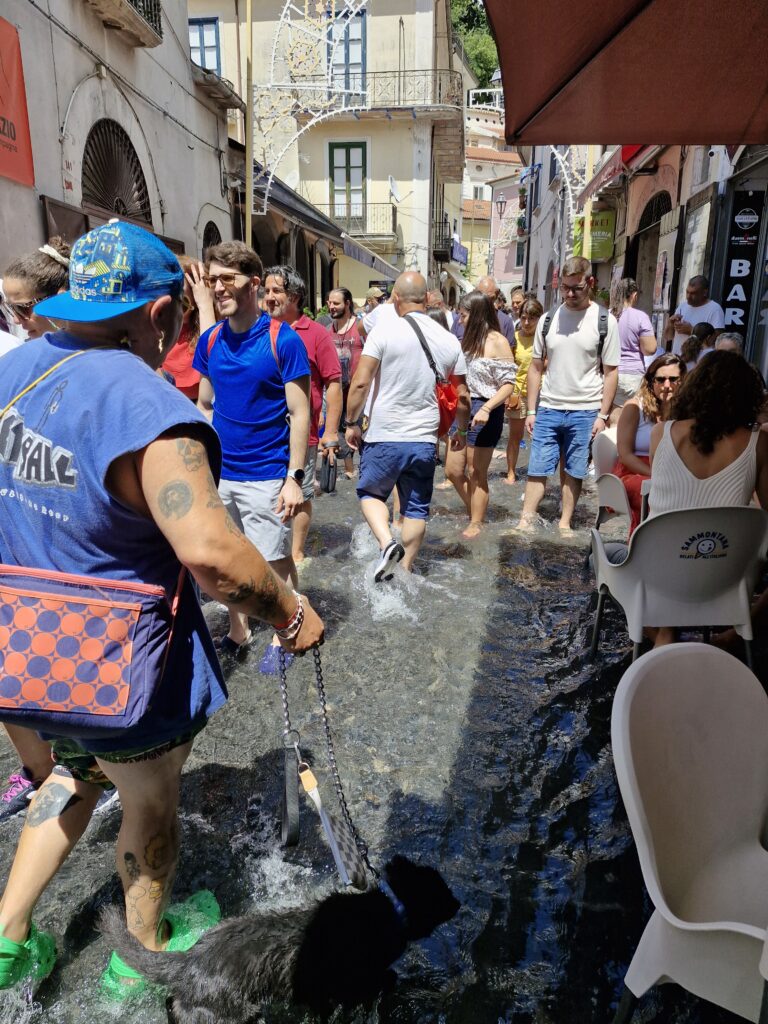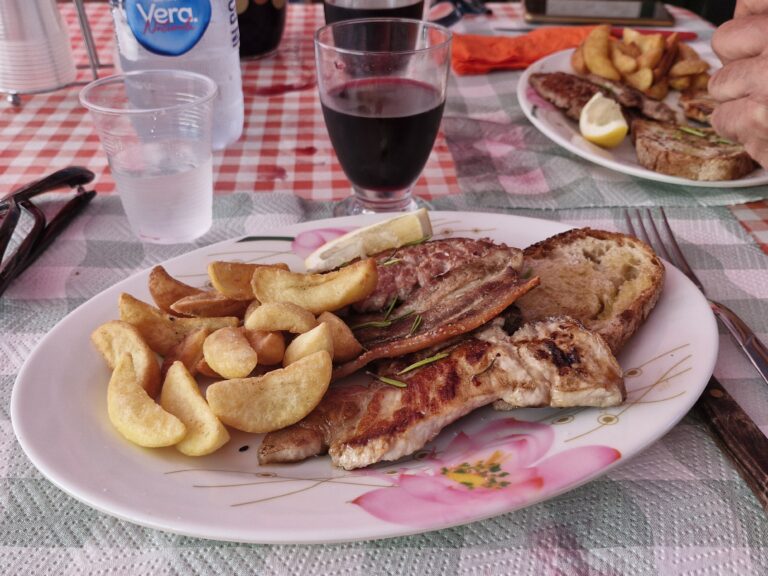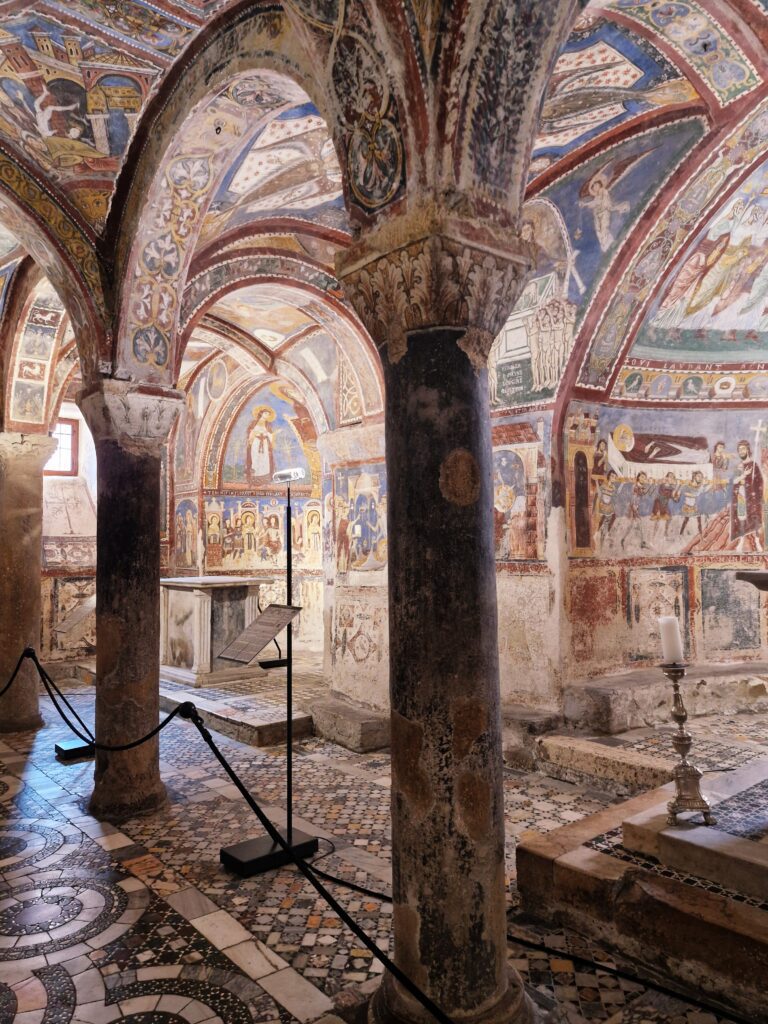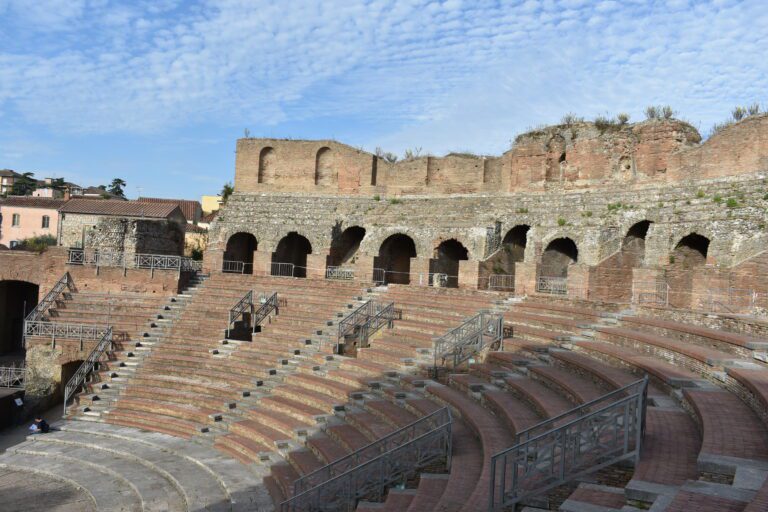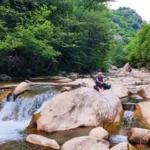Weekend break in Tuscany is a great idea for a short trip to Italy. Tuscany is widely considered the most beautiful region of Italy. Is that right? In my opinion, it is debatable (I’m a fan of Abruzzo) but it is undoubtedly a beautiful, atmospheric and always full of tourists, land.
For 4 active days during the weekend break in Tuscany we planned rafting, climbing ropes in the mountains, crossing rivers on ropes, but the weather changed our plans to more leisurely ones. And since there is no bad weather, there is only bad clothing, so instead of admiring nature and jumping ropes, on the weekend break in Tuscany in the rain we visited cities and towns: Pistoia, Lucca, Pisa, Abbazia and Eremeo di San Galgano, Monteriggioni, Colle di Vak d’Elsa, Volterra, Florence, Parco Fluviale Alta Val D’Esa. In addition, we dropped in for a short visit to Ascoli Piceno in Marche.
Tuscany is great for a weekend, but Umbria is also a beautiful region. That’s why on the way to our weekend break in Tuscany, we popped in for a few hours to the town of Rasiglia.
And then we went to our 4-day base, Pistoia, where we started our adventure entitled a weekend break in Tuscany. In the evening we visited the city; it was empty. Maybe because of the weather, or maybe because it was Feragosto, so the Italians traditionally went to the seaside.
Lucca – first city we wisited during the weekend break in Tuscany.
Lucca is the first city we visited as part of the weekend break in Tuscany. Lucca is the perfect city for wandering around. Although we got caught in heavy rain, we waited it out lying on benches under a spreading tree. And since I come from Masuria, I’m not afraid of rain, and I love lying under trees.
When writing about the cities of Tuscany, it is difficult to ignore history, so just a few words about the history of Lucca. Some historians believe that Lucca was a Ligurian settlement, while others believe that it has Etruscan roots. Nevertheless, the origins of the city go back a long way. Over the centuries, various families passed through the city until Lucca became the duchy of Maria Luisa Bourbon, and finally became part of the Grand Duchy of Tuscany. In 1860, Lucca became part of the Kingdom of Italy. Dante wanted to commemorate his days spent in exile in this city when he wrote the Divine Comedy.
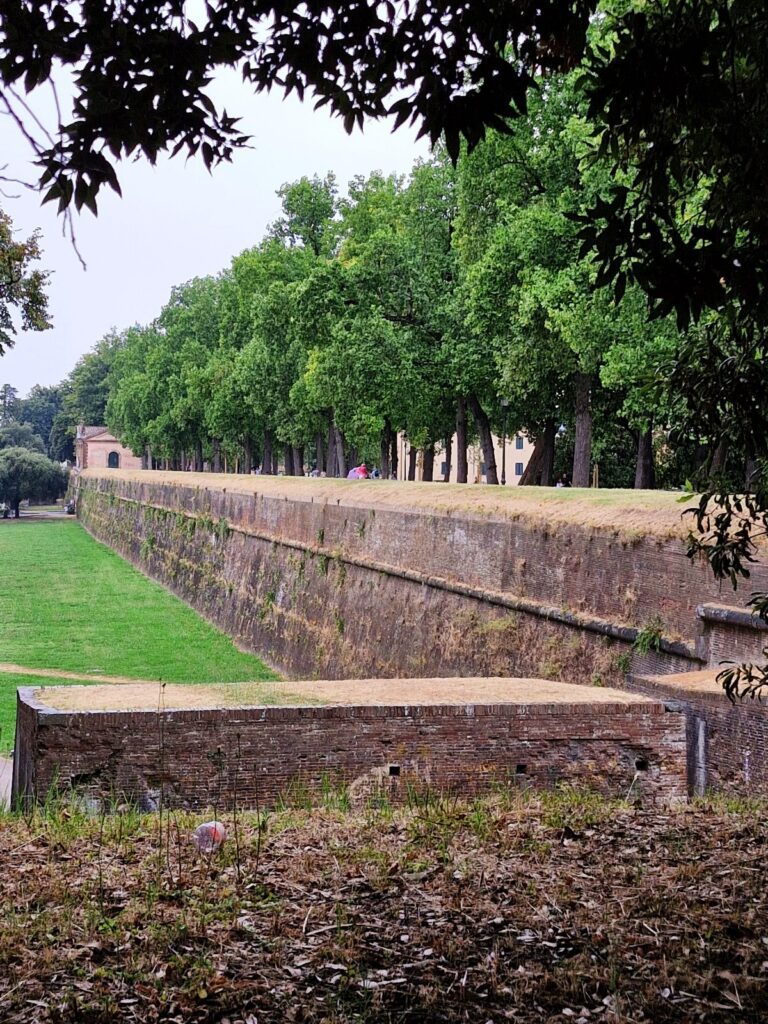
The first thing that catches your eye when you arrive in the city are the impressive defensive walls. The second longest in Europe, they were built between the 16th and 17th centuries. Of course, the walls no longer serve a defensive purpose; you can walk on them. And since they are over 4 km long and planted with trees and lawns, so they have been transformed into a park, they are a great place to walk and admire the city from above.
Even if you decide to spend your weekend break in Tuscany staying only in Luca, you’ll have plenty to see. There are numerous monuments in the city, such as: the Roman amphitheatre, the Cathedral of San Martino with its asymmetrical façade, the church and square of San Michele (Lucca is not called the city of 100 churches for nothing), the Guinigi tower in the centre, on top of which there is a garden with trees, etc. In general, there are many towers throughout the city; once they provided protection, now they are great viewpoints.
Taking care of our fitness during the weekend break in Tuscany, we decided to climb three of them; the first is the aforementioned 14th century Torre Guinigi with 232 steps. The second – in the Cathedral of Saint Martin, and the third also in the church.
I am not a fan of checking off monuments just because they are there and must be seen, but this is how Italians visit. Actually, not only Italians. Of course, there are famous places that interest me, but it’s not every historic building in turn. My way of discovering cities/towns is simply walking the streets and admiring what is around me. And if I happen to me to visit a museum or come across a famous monument, that’s great.
Therefore for me a weekend break in Tuscany doesn’t have to mean checking out places and running through the streets to see everything. It can also mean wandering around and simply admiring places, which is why I like Lucca, because it’s the perfect city for walking aimlessly.
Of course, as befits an Italian city, Lucca has all kinds of pubs and eateries on almost every corner, so those who get bored with walking have plenty of places to rest.
Pisa – a must-see during a weekend break in Tuscany.
This is a famous city, whose symbol – the Leaning Tower, I wanted to see. I was curious if it was really leaning. Well, it is. And just as I thought, surrounded by hundreds of tourists; some of them were spendind their weekend break in Tuscany.
The name Pisa comes from the Greek word for “marshy land”. The birthplace of Galileo and a former maritime power, rival to Genoa and Venice, the Republic of Pisa in the Middle Ages had access to the sea, a powerful fleet and money thanks to which it could pay artists and architects to build beautiful buildings. Over time, Pisa’s power crumbled, but the buildings remained.
Of course, the most famous is the Tower, considered one of the 7 wonders of the world. Built on marshy land, the tower began to collapse under its own weight and tilt during construction between the 12th and 14th centuries and remained so; to balance it a bit, medieval architects gently moved the top floor in the opposite direction to the tilt.

Despite how famous the Leaning Tower itself is, it was not intended to be a stand-alone structure. In fact, it’s part of a larger cathedral complex: the cathedral stands right next to the tower, and behind it the baptistery and cemetery. The cathedral and baptistery, built on the same site, are also slowly sinking. Despite this, they are absolutely beautiful buildings, bearing witness to the extraordinary skill and craftsmanship of the medieval builders. And reminding us of the power and wealth of Pisa.
All of these wonders can be visited by buying a combined ticket for 28 euros. The package also includes the Diocesan Museum. Since it was late and there were a lot of people waiting to climb the tower, we decided to skip it and visit the rest of the wonders in Piazza dei Miracoli. A combined ticket without the tower costs 11 euros. You can also buy individual tickets for the individual monuments; this option costs 8 euros per building.
We bought a ticket for 11 e, and unfortunately the tour turned out to be quite disappointing. I don’t know if we just happened to come across at our weekend break in Tuscany or if it’s a regular practice, but the center of the cathedral is cordoned off right by the entrance. So there’s no way to see the sculptures and paintings on the walls up close, and there’s a lot to admire there. And I think that’s an absolute scandal.
The beautiful baptistery building on the outside is a bit less interesting on the inside, although it’s still absolutely interesting, and there’s a nice view of the cathedral from the windows. Built in 1277 (according to local legend) on sacred soil brought from Golgotha in the 12th century, the Cemetery (Campo Santo) is an impressive Gothic building with large columns and arches. You can skip the diocesan museum because it’s simply boring, and not because I’m an atheist. The exhibition is simply bland.
Leaving the crowds of tourists taking selfies and, of course, photos titled: ‘supporting the tower’, we decided to walk along the river. There are old, colorful buildings there, and what I like the most is that they are old, and not pretend to be. There’s no mixture of old and new houses, like in Florence, for example. There’s also a small, pretty church by the river. Interestingly, this part of Pisa was almost empty.
I’ve read somewhere that 90% of tourists visit 10% of tourist destinations. And comparing the crowds at the tower and the emptiness in the immediate vicinity, I think it’s true. And I hope it’ll stay that way.
The first two days od our weekend break in Tuscany turned out to be quite successful, despite the annoying weather. What we saw in last 2 days read here.

